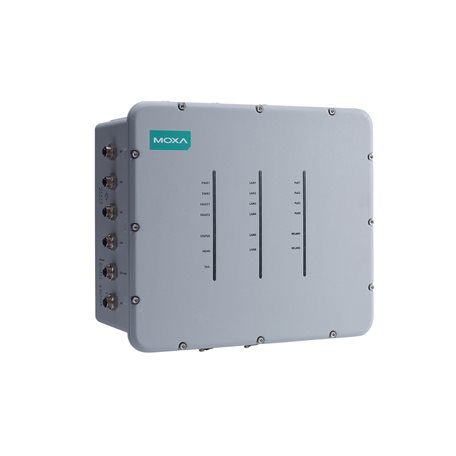
Click “WhatsApp Us” or “Get a Quote” above to buy TAP-323 from APulsar Technologies, MOXA official distributor.
In stock. Purchase walk-in from our office in Petaling Jaya, or order online and enjoy fast delivery across Kuala Lumpur and the entire Malaysia.
The TAP-323 trackside wireless unit is designed for train-to-ground wireless communication. The TAP-323 is a highly compact and rugged wireless unit that integrates two access points, a managed fiber switch, and a wide-range AC/DC power supply into one box. The IP68 housing allows the unit to withstand harsh weather conditions, and the M12 connectors make the unit shock and vibration resistant. The TAP-323 supports advanced controller-based Turbo Roaming technology for train-to-ground wireless applications such as communication-based train control (CBTC) and CCTV. The unit can supply power to up to 4 PoE devices while providing reliable LAN communication with Moxa’s Turbo Chain technology.
Note: Due to a limitation in the receiver sensitivity performance for channels 153 and 161, it is recommended to avoid using these channels in your critical applications.
Note: Due to a limitation in the receiver sensitivity performance for channels 153 and 161, it is recommended to avoid using these channels in your critical applications.
| PSE/Voltage | 110 VDC | 110 VAC | 220 VDC | 220 VAC |
| 0 PSE port in use | 17.4 W | 16.2 W | 17.6 W | 17.5 W |
| 1 PSE port in use | 34.15 W | 32.6 W | 33.8 W | 33.55 W |
| 2 PSE ports in use | 50.9 W | 49 W | 49.9 W | 49.6 W |
| 3 PSE ports in use | 67.65 W | 65.4 W | 66 W | 65.65 W |
| 4 PSE ports in use | 84.4 W | 81.8 W | 82.1 W | 81.7 W |
Apulsar.com uses cookies to ensure you get the best experience. By continuing to browse, you agree to our use of cookies. Our privacy policy available here